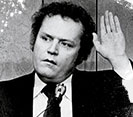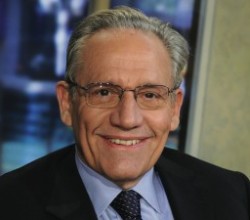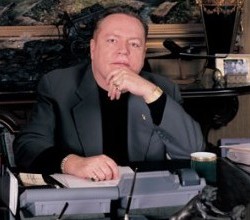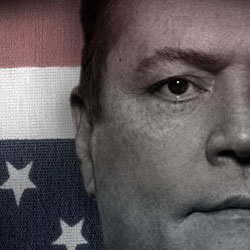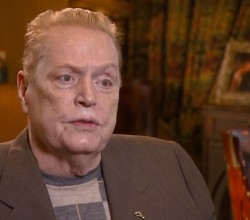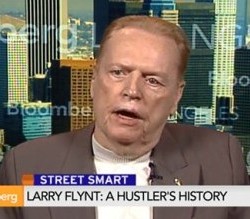Aborting Freedom
WHAT HAPPENS WHEN POLITICS ENTERS THE WOMB
by Paul Krassner
The Dinosaur Follies—better known as the 2012 Republican Presidential primaries—sucked so badly that the candidates finally turned themselves inside out. Most disgusting was the way they all pandered to their fanatical, antichoice constituents. Ironically, those same puritan politicians supposedly promoting small government also thought it was just fine to force new laws into countless unwilling vaginas.
My Campaign Pandering Award goes to Mitt Romney. He wants to overturn Roe v. Wade, the landmark 1973 Supreme Court decision that deemed abortion a woman’s fundamental right under the Constitution. And yet in 1994, when Romney was running for the U.S. Senate, he came out in favor of choice for women. Freelance journalist Suzan Mazur revealed he’d admitted to Mormon feminist Judith Dushku that “the brethren” in Salt Lake City told him he could take a pro-choice position and that, in fact, he probably had to in order to win an election in a liberal state like Massachusetts.
While Romney now believes that life begins at conception, Rick Santorum believes that life begins at foreplay. He has gone way beyond taking a fanatical stand against a woman’s right to abortion. Santorum is also against contraception even though that would prevent the need for an abortion. And he vows to “ban all pornography”—or as I call it, “masturbation helper”—despite the fact that porn would negate the need for contraception. Basically, Santorum is against pleasure itself, but he is for thought control.
When abortion was illegal in this country, women had no option but to seek out back-alley butchers to perform the procedure. If there was a botched surgery, and the patient had to be hospitalized, the police were called; they wouldn’t allow a doctor to provide a painkiller until the woman divulged the information they sought.
In 1962, a Look magazine article stated, “There is no such thing as a ‘good’ abortionist. All of them are in business strictly for money.” But in my own magazine, the Realist, I published an anonymous interview with Dr. Robert Spencer, a humane abortionist who was known as “The Saint.” Patients from around the country came to his office in Ashland, Pennsylvania. Dr. Spencer had been performing abortions for 40 years, originally charging five dollars and never charging more than a hundred. He rarely used the word pregnant. Rather, he would say,“She was that way, and she came to me for help.” He talked about “the voice of the uterus.”
Lugging my gigantic Webcor tape recorder, I took a five-hour bus trip from New York City to Ashland. It was a small town, and Dr. Spencer’s work was not merely tolerated, but the community also depended on it. The hotel, the restaurant, the dress shop all thrived on the extra business that came from his out-of-town patients.
At his clinic, Dr. Spencer built facilities for African-American patients who weren’t allowed to obtain overnight lodging elsewhere in Ashland. A sign on the ceiling over his operating table said “Keep Calm.” After my interview with Dr. Spencer was published in the Realist, I began to get phone calls from scared, desperate women. They all were in search of a safe abortionist. It was preposterous that they felt compelled to contact the editor of a satirical magazine, but they simply didn’t know where else to turn.
With Dr. Spencer’s permission, I referred them to him. At first, there were only a few calls each week, then several every day. I had never intended to become an underground abortion referral service, but I wasn’t going to stop just because the next issue of the Realist would be containing an interview with somebody else.
A few years later, Pennsylvania state police raided Dr. Spencer’s clinic and arrested him. He remained out of jail only by the grace of politi- cal pressure from those he’d helped. Dr. Spencer was finally forced to retire from his practice, but I continued mine, referring callers to other physicians he’d recommended.
From time to time, I’d be offered money by a woman seeking an abortion, but I never accepted it. And whenever a doctor offered a kickback, I refused. But I’d insist that he give a discount for the same amount to those patients referred by me.
Eventually I was subpoenaed by district attorneys in two cities to appear before grand juries investigating abortion providers. On both occasions, I refused to testify, and each time the D.A. tried to frighten me into cooperating with the threat of arrest.
In Liberty, New York, my name had been extorted from an abortion patient by threatening her with arrest. That’s why one morning at around six o’clock, there was a knock on my door. With reluctance, I was soon being driven a hundred miles to Liberty’s district attorney by the subpoena-waving man who’d awakened me. I was delivered to the D.A., who told me that the doctor had confessed everything on tape. He then gave me until two o’clock that afternoon to change my mind about testifying or else the police would come to take me away.
“I’d better call my lawyer,” I said. I went outside to a public phone and called not a lawyer but the doctor. “That never happened,” he said. I returned to the D.A.’s office and told him that my lawyer said to continue being uncooperative. Then I just sat there waiting for the cops. “They’re on their way,” the D.A. kept warning me. But at two o’clock he simply said, “Okay, you can go home now.”
Bronx District Attorney Burton Roberts took a different approach. In September 1969, he told me that his staff had found an abortionist’s financial records that showed all the money I had received. Roberts went on to say that if I cooperated with the grand jury, he’d grant me immunity from prosecution.
The D.A. extended his hand. “That’s not true,” I said, refusing to shake hands with him. If I had ever accepted any money, I’d have no way of knowing that he was bluffing. Roberts was angry, but he finally had to let me go.
On my behalf, attorney Gerald Lefcourt filed a suit challenging the constitutionality of New York State’s abortion law. Lefcourt pointed out that the district attorney had no power to investigate the violation of an unconstitutional law, and therefore he could not force me to testify. In 1970, I became the only plaintiff in the first lawsuit to declare New York State’s abortion laws unconstitutional. “Later, various women’s groups joined the suit,” Lefcourt recalls, “and ultimately the New York legislature repealed the criminal sanctions against abortion prior to the Supreme Court decision in Roe v. Wade.”
Dr. Spencer never knew about that. He had died in 1969. An obituary in the New York Times acknowledged the existence of his abortion clinic. The obituary in Ashland’s local paper did not. When I interviewed Dr. Spencer, I asked, “Do you have any idea about how many actual abortions you’ve performed during all these years?”
“To be accurate,” he replied, “it’s 27,006.” The figure, he added, included many women who had been impregnated by police and priests alike.
I never kept records of how many referrals I made, but I’d estimate at least a thousand. At one point I thought the FBI might be listening to my phone calls, and I spoke with a telephone operator to see if there was a way I could find out. She asked me why I thought my line was being tapped, and I said, “Because I refer women to doctors who perform abortions.”
It turned out that the operator was pregnant and didn’t want to be. I was glad to help her out. No wonder my religion is Coincidence.
—————————–
Paul Krassner edited his satirical magazine the Realist from 1958 to 2001. When People magazine called him “father of the underground press,” he immediately demanded a paternity test. Krassner, who was a cofounder of the Yippies (Youth International Party) and a fellow traveler of Ken Kesey and the Merry Pranksters, has authored several books. Recently, the writers’ organization PEN honored him with its Lifetime Achievement Award. Krassner also publishes the infamous Disneyland Memorial Orgy poster available at PaulKrassner.com.

